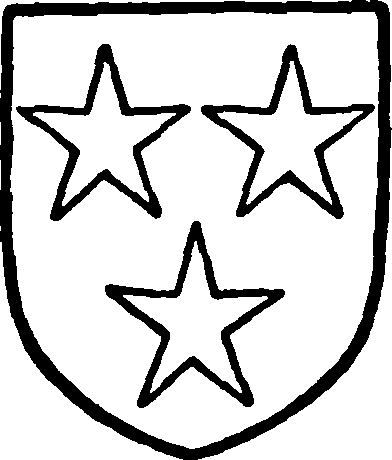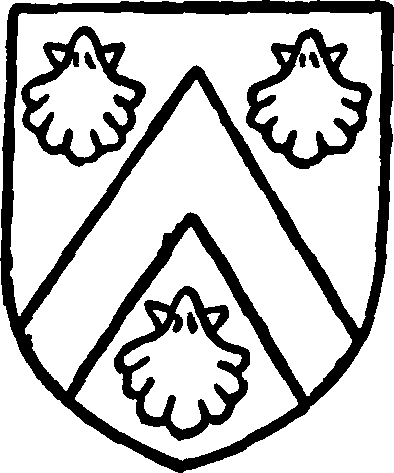A History of the County of York North Riding: Volume 1. Originally published by Victoria County History, London, 1914.
This free content was digitised by double rekeying. All rights reserved.
'Parishes: Great Smeaton', in A History of the County of York North Riding: Volume 1, ed. William Page (London, 1914), British History Online https://prod.british-history.ac.uk/vch/yorks/north/vol1/pp198-199 [accessed 1 February 2025].
'Parishes: Great Smeaton', in A History of the County of York North Riding: Volume 1. Edited by William Page (London, 1914), British History Online, accessed February 1, 2025, https://prod.british-history.ac.uk/vch/yorks/north/vol1/pp198-199.
"Parishes: Great Smeaton". A History of the County of York North Riding: Volume 1. Ed. William Page (London, 1914), British History Online. Web. 1 February 2025. https://prod.british-history.ac.uk/vch/yorks/north/vol1/pp198-199.
In this section
GREAT SMEATON
Smeton, Smetton (xi cent.); Smethyton, Smetheton (xii–xiv cent.); Smitheton (xiii–xv cent.); Smeton (xvi cent.).
The area of this parish is 3,421 acres, of which 1,309 acres are arable, 1,744 acres are laid down to permanent grass and 147 acres are covered by woods and plantations. (fn. 1) The subsoil is Red Sandstone and Marl, the soil clay. The chief crops raised are wheat, oats and barley.
The village of Great Smeaton stands on a short ridge rising from the level of the River Wiske half a mile to the south, the churchyard occupying the highest point.
Approaching by the wide main road from Northallerton, 7 miles to the south, the road makes its first sharp turn on entering the village, trending north-west in the direction of Croft.
The rectory lies among trees which extend behind the church and village on that side. At the east end of the churchyard is a small square green, on the north of which is Smeaton Hall, a typical Georgian red brick house. The houses are closely grouped round the road on each side of the churchyard and are of brick or rough-cast with tiled roofs. Two noticeable painted signs hang in the main street, the 'Bay Horse' and the 'Bull.'
The surrounding country is flat or slightly undulating, the main road being often lined with trees on one side or the other.
Thorpe Row (Thorpe Parva, Thorperaw) Farm close to Great Smeaton was once the hamlet of Little Thorpe and belonged to the lords of Hornby, (fn. 2) a village to the north-east of Great Smeaton.
Walter de Killingholm in the 13th century granted to St. Mary's Abbey, York, his mill on the Tees near 'Pilcotwath' (fn. 3) in Magna Smeaton, with its pool in the territory of Sockburn. In 1388 Sir John de Nevill of Raby held the capital messuage under the Abbot of York. (fn. 4) In 1594–5 a horse-mill, two water-mills, seven dovecotes and free fishing in the River Wiske, which forms the southern boundary of the parish, were appurtenant to the manor of Great Smeaton. (fn. 5)
A School Board for the united district of Great and Little Smeaton and Hornby was established in 1873, when a Board school was erected; this was enlarged in 1896. The Wesleyan chapel at Hornby was built in 1835. The parochial chapelry of Appleton-upon-Wiske has since been included as a township in this parish.
Manors
Four of the 6 carucates and a 'manor' in GREAT SMEATON which had belonged to Malgrim before the Conquest had passed into the hands of Count Alan in 1086 (fn. 6) and were afterwards included in the lands of the honour of Richmond. (fn. 7) The remaining 2 carucates were then in the hands of the king. (fn. 8) In the 13th century a mesne lordship under the Earls of Richmond (fn. 9) was held over one-third of a knight's fee (fn. 10) by the family of Fitton of East Cowton.
At this period the whole of the vill with the exception of 1 carucate was held by the abbey of St. Mary, York, (fn. 11) which seems to have derived its land both from the fee held by the honour and from the land in the king's hands in 1086. The church and 4 carucates of land were obtained from Hardwin de Scales, while one Bernard gave 1 carucate, both gifts being confirmed to the abbey by Henry II. (fn. 12) At the Dissolution the manor was valued at £11 19s. 4d., this including 40s. farm from Richard Vincent. (fn. 13)
In 1543 Richard Vincent obtained from the Crown a grant of the vill in two separate parcels and also the advowson of the rectory. (fn. 14) He died seised in January 1558–9, leaving a son and heir Marmaduke, (fn. 15) who died in February 1594–5. (fn. 16) Marmaduke had two daughters, Jane, who married William son and heir of Edward Vincent, and Ellen married to Thomas younger son of John Beverley of Westow. (fn. 17) The manor was divided between these two sisters and their heirs. The first half was inherited by Marmaduke, son of Jane and William Vincent, a minor in 1595. (fn. 18) He died in 1637, leaving a son Richard. (fn. 19) No further history of this moiety has been found. The second moiety of the manor descended from Thomas and Ellen Beverley to their son Vincent Beverley, who died in 1634, leaving a son and heir John. (fn. 20) In 1653 he conveyed the manor to James Darcy and others. (fn. 21)
In 1689 John Tindall and Jane his wife, probably daughter and co-heir of John, conveyed a quarter of the manor and the advowson to Thomas Wood. (fn. 22) According to Ingledew the Rev. Henry Hewgill, who from 1754 held the advowson, was also lord of the manor (fn. 23); but conveyances of the manor were made in 1776 by Thomas Wood and in 1801 by Edward Wood and Edward his son. (fn. 24) Colonel A. F. Godman, C.B., is the present owner.
The 1 carucate of land held under the mesne lordship of Edmund Fitton, lord of East Cowton (q.v.), was in 1286–7 in the hands of John de Smeaton. (fn. 25)
HORNBY (Horebodebi, Horenbodebi, xi cent.; Herneby, Erneby, xiv cent.) was land of the Bishop of Durham in 1086, (fn. 26) and it was held of the manor of Northallerton in 1573. (fn. 27) Before the Conquest Aschil held 2 carucates here. In 1086 the soke of this land was in Sessay, (fn. 28) and it was waste. Hugh, Bishop of Durham, granted the vill of Hornby for his services (fn. 29) to Gilbert Hansard, who made a grant of land in this territory to St. Mary's Abbey, York, in 1184. (fn. 30) Gilbert was succeeded by his son Gilbert, to whom King John confirmed the vill in 1199 (fn. 31); his Durham lands descended to his son Sir John Hansard, kt., (fn. 32) but another branch of the family must have been in possession of Hornby, for in 1281 one Gilbert Hansard settled a messuage and lands here on John Hansard, jun., and his heirs with remainders to Gilbert brother of John and his heirs, and contingent remainder to Gilbert's own right heirs. (fn. 33) Gilbert Hansard held 4 carucates here in 1286–7 and in 1316 was returned as sole lord. In this same year the Bishop of Durham granted to his sister Alice de Kellaw the custody of all lands and tenements in Hornby that had belonged to Sir Gilbert Hansard, kt., and were in the bishop's hands by reason of the minority of William his son and heir. (fn. 34) Ralph Nevill of Middleham died in 1367 seised of land in Hornby that he held for life of John Hansard with remainder to John's heirs. (fn. 35) Richard le Scrope of Bolton obtained licence in 1384 to acquire lands in Hornby and half the manor of Hornby from Geoffrey de Sinningthwaite, (fn. 36) presumably a trustee for the Hansards. There are two separate conveyances to him in this year of a moiety of the manor, one by Geoffrey de Sinningthwaite, (fn. 37) the other by the parsons of the churches of Wensley and Marske. (fn. 38) The Scropes of Bolton (fn. 39) held Hornby until 1571, (fn. 40) when Henry Lord Scrope conveyed it to William Tancred (fn. 41) of Boroughbridge, who died seised in 1573. William died intestate and without making provision for his younger son James, and Thomas, the eldest son, (fn. 42) to recompense James, conveyed the manor of Hornby to his use, and before 1596 sold it, giving James the proceeds. (fn. 43) Perhaps the conveyance made by the two brothers in 1583–4 of the manor to William Bate (fn. 44) was this alienation. Thomas Smelt and Jane his wife conveyed the manor to Christopher Byerley in 1636–7. (fn. 45) The next mention found of Hornby is the conveyance of tenements here with the manor of Girsby (fn. 46) to William Blackett in 1682, (fn. 47) and from this date the manor of Hornby followed the descent of the Blacketts' manor of Sockburn, (fn. 48) and is now the property of Maj.-Gen. Sir Edward William Blackett, bart.

Hansard. Gules three molets argent.

Tancred of Boroughbridge. Argent a cheveron between three scallops gules.
Church
The parish church of ST. ELOY is modern with the exception of a 14thcentury nave arcade, and consists of chancel 25 ft. 7 in. by 12 ft. 6 in. with north vestry, nave 47 ft. by 15 ft. 4 in., south aisle 7 ft. 7 in. wide, south porch and west bell-turret.
On the south of the nave is a 14th-century arcade of three bays resting on octagonal shafts with moulded capitals and on respond corbels supported on heads. In the west wall are two trefoiled lancet windows with quatrefoils over.
The walling of the church is of coursed rubble, and that of the chancel is old walling re-used. The roofs of nave and chancel are steep pitched. There are no buttresses, but at the west end is a bell-turret with two bells.
The font is cylindrical, covered with rough diaper work of Norman character.
The plate consists of a cup and cover bearing the London mark of 1571, a plated cup and two pewter patens.
The registers begin in 1580, but the entries are irregular till 1690.
Advowson
The advowson followed the descent of the manor of Great Smeaton until the 18th century. (fn. 49) From 1754 until 1848 it was held by the Rev. Henry Hewgill, son of Henry Hewgill and Cordelia Place, (fn. 50) and his descendants. (fn. 51) The Rev. Henry Hewgill, who was also rector of Great Smeaton, had a son LieutenantGeneral Edwin Hewgill, who died in 1809, leaving a son and heir Henry, father of Captain Edwin Henry Hewgill. (fn. 52) From this family the advowson was purchased in 1848 by John Barry, and sold by him or his heirs in 1866 to the Rev. Samuel Jenison Mosse. His family held it until 1891, when it was bought by the Rev. Peter Elwin Wrench, who left it by will in 1897 to the present patron and rector, the Rev. Peter Elwin Wrench. (fn. 53)
In 1576 the waste free chapel of Hornby, in the tenure of the inhabitants there, was granted to John Sonky and others. (fn. 54)
Charity
Lady Calverley's Charity.—The parish is entitled to participate in these benefits.
